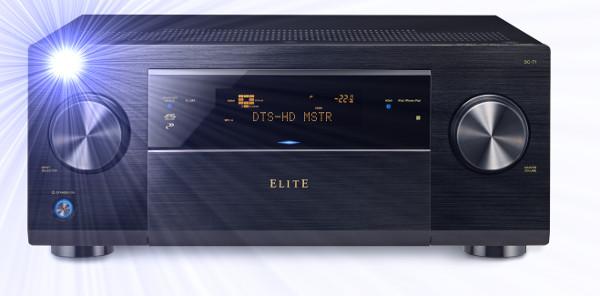My wife's coworker was spouting off on a great sound bar system he picked up at Costco for his family room when we had him over for dinner prior to the run-up to Christmas. Our equipment is discreetly hidden in cabinetry so at the touch of the iPad button the screen and projector pop down from the ceiling and queued up my favorite scene in The Terminator, He was visibly depressed after that and I was very proud of my with
The intent wasn't to showboat but showcase what a good system is capable of and enjoyment you can achieve, perhaps he garners great satisfaction from his sound bar
Long Live the (AVR) King!

I didn’t really expect this to be an issue since the receiver was such a lynchpin upgrade to the whole system, so I was a taken aback when he responded by asking if he even needed a receiver anymore and saying a friend of his said receivers were obsolete and had been replaced by newer and better technologies like soundbars and wireless speakers.
Taking a moment to gather my thoughts—and resisting the urge to blurt, “Your friend is an idiot and has no idea what he’s talking about!”—I explained that this couldn’t be further from the truth and that the AV receiver continues to be the most important part of any home theater system. And like any bit of modern technology, massive performance upgrades and enhancements have taken place in the past decade. If you haven’t upgraded your receiver recently, or have been on the fence about whether to go soundbar or traditional surround, here are six reasons why the AVR is still king.
It’s the Hub
Literally every other component in the system connects to the receiver. Like The Force, the receiver surrounds, penetrates, and binds your AV galaxy together. Whether it’s HDMI, component, composite, analog, or digital, a modern receiver takes it all in, processes it, and sends video out to your display on a single cable, eliminating input switching and simplifying operation.
Room Calibration
Whether it is Audyssey, YPAO, MCACC, ARC, AccuEQ, DCAC, or something else, nearly every modern AVR includes fancy internal soft ware that analyzes test tones to correct for sonic defects in your room. This feature also automates initial setup like speaker levels and channel distances. While not a difficult chore, it’s an important one many DIY-ers oft en ignore. With this technology on board, your speakers often sound significantly better in your room, letting you get the most out of your audio investment.
Streaming If you have a receiver that predates Al Gore inventing the Internet, then you definitely are missing out on some awesome audio features. Most every new receiver is network capable, and many include built in Wi-Fi for easy connection. Some even include network switches to allow easy connection of other gear. Once connected to your network, you can stream your own ripped music as well as countless free Internet radio stations and other services like Pandora, Spotify, and SiriusXM. Many receivers also include Bluetooth or Apple’s AirPlay to beam content straight from your smartphone or tablet.
Multiroom
Receivers have featured multi-zone/multi-source options for a long time, letting you play one thing in the main room while listening to something else through another pair of speakers elsewhere. But modern AVRs make these options more powerful than ever, with many featuring dual HDMI outputs, allowing you to share video sources beyond one room. The new flagship Sony ES receiver can route two different 4K, HDCP 2.2 sources to two different 4K TVs! With higher-end models featuring nine or more amp channels, speakers can be powered in a second, third, or even fourth room. That can make the receiver the hub of your entire home’s entertainment system.
App Control
Why control your system with an IR remote like a schlub when you have the power of a mini supercomputer sitting in your pocket?! Most manufacturers offer an app-based controller that lets you control a new AVR from anywhere in your Wi-Fi-connected home. These apps are also terrific for controlling the multiroom features mentioned above, selecting what will play and adjusting the volume, or picking your favorite Pandora station without powering up the TV.
Best Sound
Soundbars are great for what they are, but don’t get it twisted—a soundbar will never outperform a true surround system. Further, most soundbars get their signals from the TV’s digital audio output, meaning you’re missing out on lossless Dolby TrueHD and any form of DTS. Using an AVR also gives you more power and lets you pair up with your preferred speakers. Plus, a new audio revolution by the name of Dolby Atmos is coming that will require a modern AVR to enjoy.
- Log in or register to post comments


Soundbar idiocy happened to a friend of mine when he got bamboozled at HHGreg and spent 1500K on crap. He came over mouthing off about his big deal. Of course he thought it was great until I ramped up my 7.2 Pioneer Elite receiver and ATL THX speakers with 2 12" subs and Thor pounding away. The good news is that he was able to return everything and I was able to help him. The other funny thing is that he had a 3K budget even before going to a mega-store. Took him to a local audio 'salon' I've been using for 25 years. After we picked his chin up off the floor he left with a really nice setup with money to spare to buy me dinner. Everybody wins...........


























































